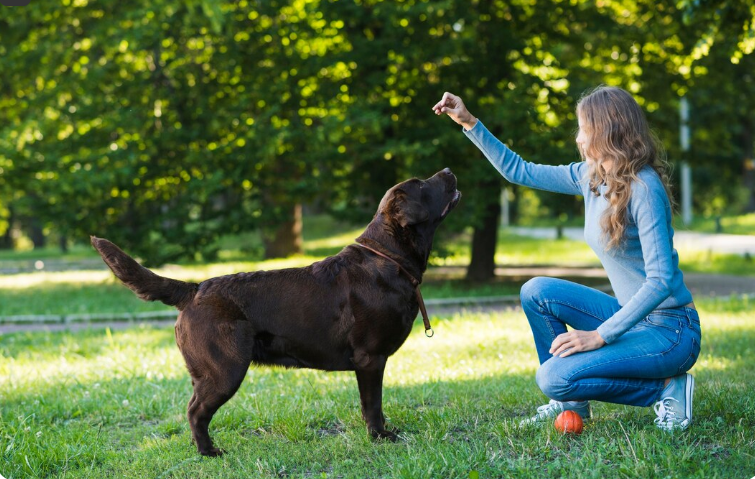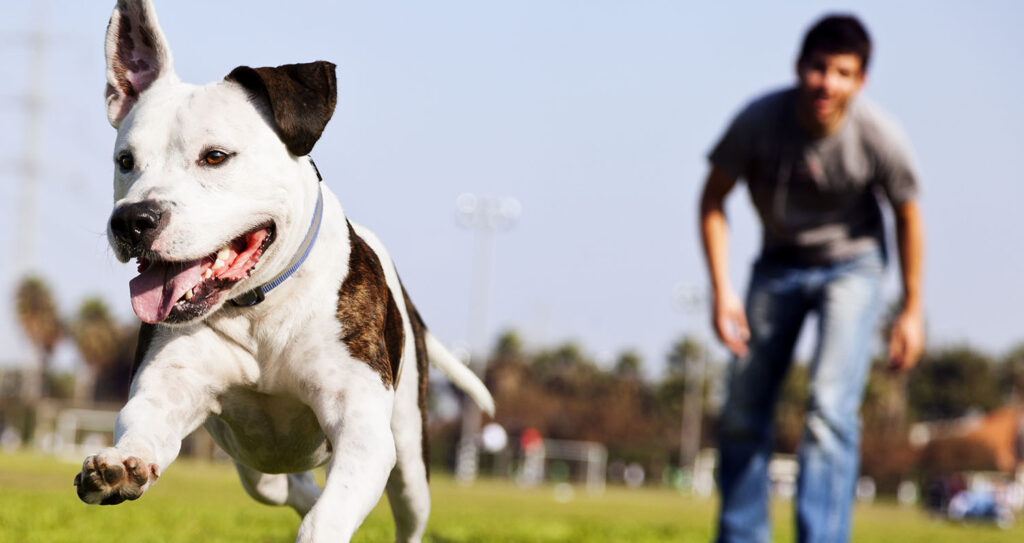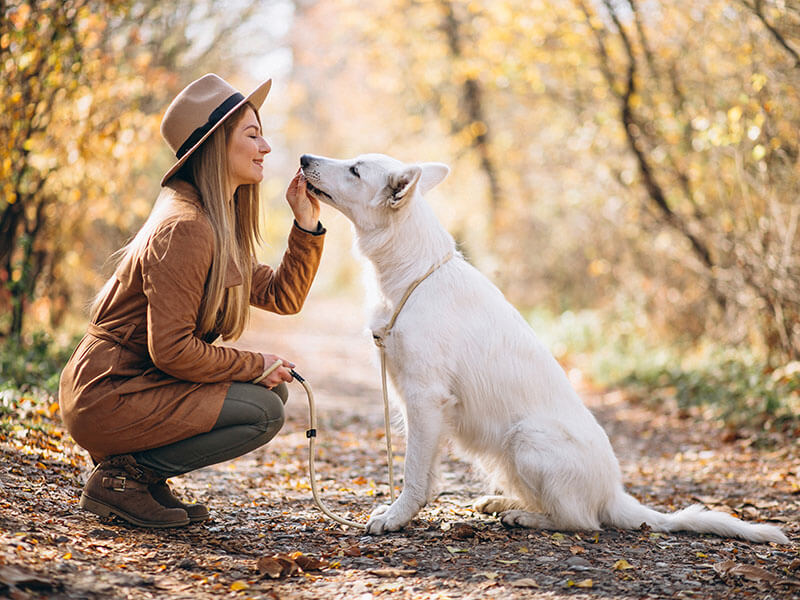
Training your dog is essential for building a strong bond, ensuring their safety, and promoting good behavior. Here are the top 15 essential dog training commands every pet parent should master—with step-by-step guidance.
Table of Contents
Toggle1. Sit
Why it matters: Foundational for obedience and impulse control.
How to teach: Hold a treat above your dog’s head and move it back. As their bottom touches the ground, say “Sit” and reward.
2. Stay
Why it matters: Keeps your dog safe in unpredictable situations.
How to teach: Ask your dog to sit, say “Stay” while holding your palm out. Take a few steps back, return, and reward.
3. Come
Why it matters: Crucial for recall and safety.
How to teach: With a leash on, crouch and say “Come” in a cheerful voice. Reward immediately upon arrival.

4. Down
Why it matters: Promotes calm behavior.
How to teach: Hold a treat to your dog’s nose, lower it to the ground, and say “Down” as they follow.
5. Leave It
Why it matters: Prevents ingestion of harmful items.
How to teach: Place a treat in both hands. Say “Leave it” while showing a closed fist. When ignored, reward with the other hand.
6. Heel
Why it matters: Keeps your dog calmly walking beside you.
How to teach: Use a short leash. Hold a treat in your left hand close to your thigh. Say “Heel” and start walking. Reward when they stay beside you.

7. Off
Why it matters: Prevents jumping on furniture or people.
How to teach: When your dog jumps, say “Off” firmly. Guide them down and reward as soon as all four paws are on the ground.
8. Wait
Why it matters: Teaches impulse control at doors or before meals.
How to teach: Ask your dog to “Sit.” Say “Wait,” then open the door or set down the food bowl. If they move, close it. Reward only when they hold position.
9. Drop It
Why it matters: Essential for safety if your dog grabs something dangerous.
How to teach: Offer a toy and let them take it. Then show a treat and say “Drop it.” When they release the toy, reward with the treat.
10. Quiet
Why it matters: Helps manage excessive barking.
How to teach: When barking, say “Quiet” calmly. Wait for a pause, then reward. Avoid yelling—stay patient and consistent.
11. Look (Watch Me)
Why it matters: Gains your dog’s attention in distracting environments.
How to teach: Hold a treat to your forehead and say “Look” or “Watch me.” Reward eye contact immediately.
12. Go to Bed
Why it matters: Encourages relaxation and sets boundaries.
How to teach: Lead your dog to a mat or bed. Say “Go to bed” and guide them into a down position. Reward and reinforce with short durations.

13. Touch
Why it matters: Great for focus, training, and building confidence.
How to teach: Present your hand and say “Touch.” Reward when your dog’s nose makes contact. Build into games and recall practice.
14. Take It
Why it matters: Teaches permission before grabbing food or toys.
How to teach: Hold a treat or toy in front of them. Wait for calm, then say “Take it” and release the item.
15. No
Why it matters: A universal cue to stop unwanted behavior.
How to teach: Use “No” only for redirection—not punishment. Pair it with guidance toward a positive behavior and reward when they comply.
Final Tips for Success:
- Keep sessions short: 5–10 minutes is ideal.
- Be patient. Repetition and consistency are key.
- Always end on a positive note.
- Use high-value treats and lots of praise.
- Train in varied environments to build reliability.